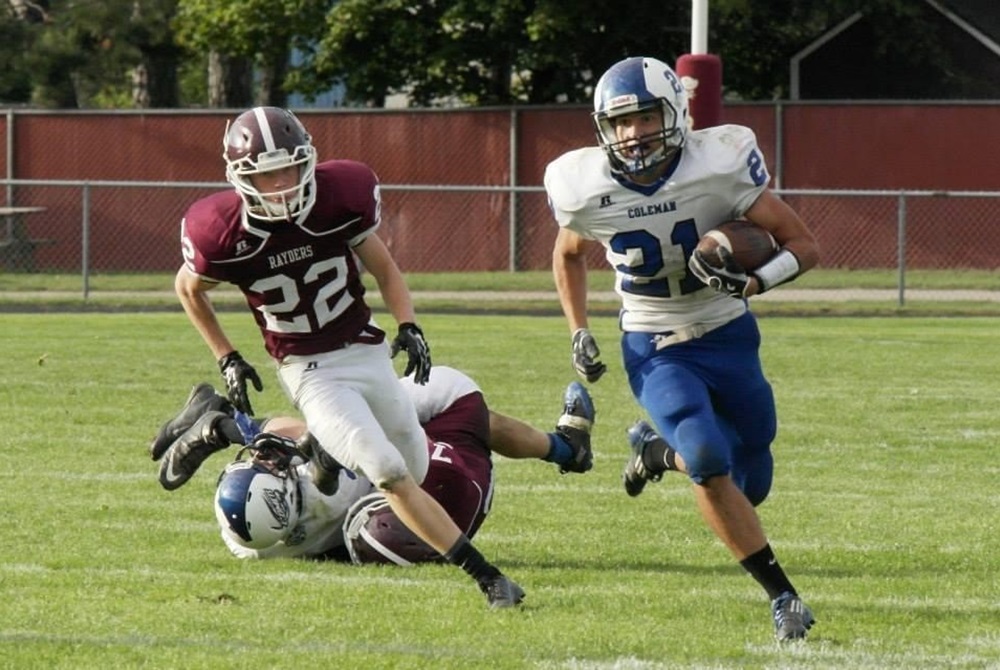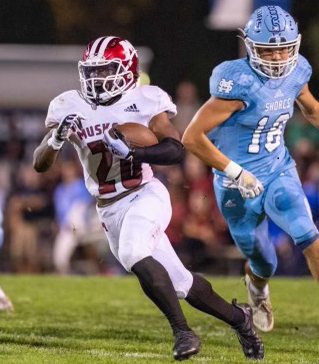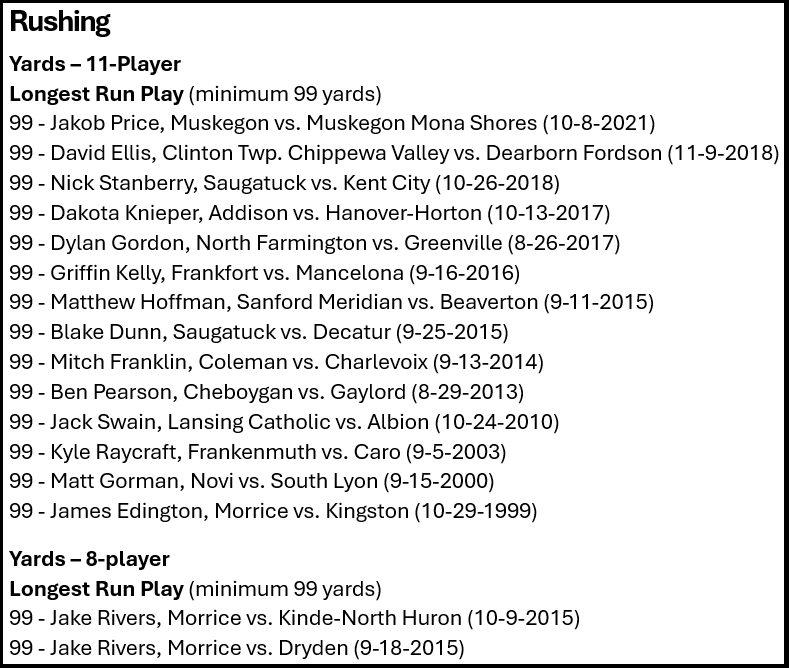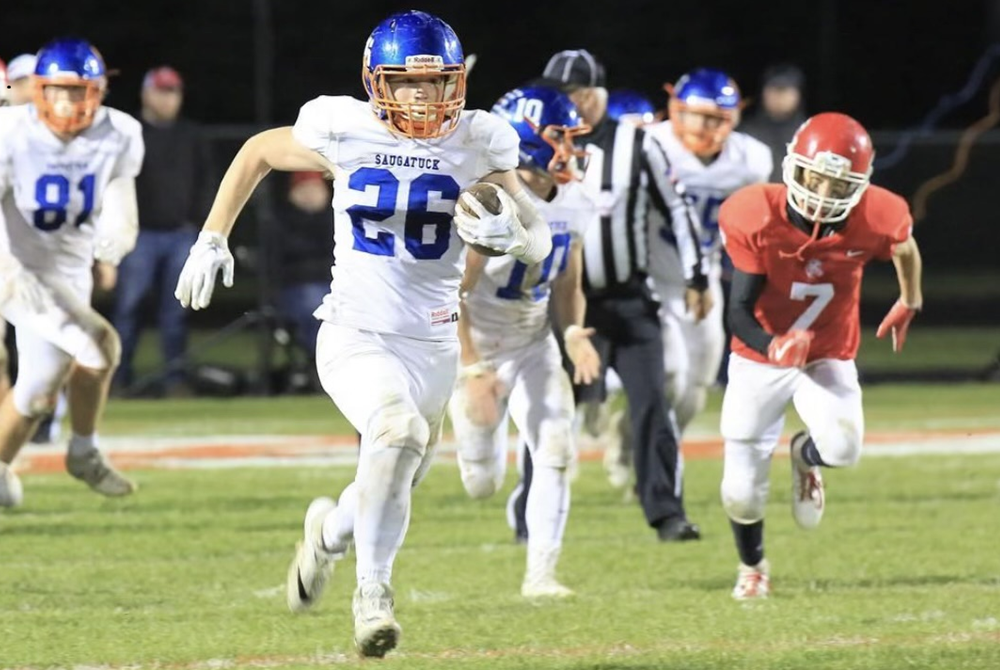
New Math: Division & Multiplication Problems
July 25, 2017
By Jack Roberts
MHSAA Executive Director
This is the second part in a series on MHSAA tournament classification, past and present, that will be published over the next two weeks. This series originally ran in this spring's edition of MHSAA benchmarks.
High school tournament classifications went viral before there was social media and most of us knew what “viral” meant.
Much as a virus infects computers today or has created epidemics of disease around the world for centuries, high school tournament classification – once introduced – tends to spread uncontrollably. Once started, it tends to keep expanding and rarely contracts.
While we are still some distance from providing every team a trophy as a result of expanding high school tournament classification across the country, there is criticism nevertheless that we are headed in that direction – a philosophy which is supposed to exist only in local youth sports for our youngest children.
Michigan could be blamed for all this. Michigan is generally accepted as the first state to provide different classifications for season-ending tournaments for different sized schools. It started a century ago. Today, every state has various classifications for its tournaments in most if not all sports. And it is a bit ironic that Michigan – creator of the classification chaos – more than most other states has kept the number of tournament classes or divisions under control.
Yes, there is evidence that tournament classifications have expanded over the years in Michigan, especially with the relatively recent introduction of tournaments in football and the late 1990s’ move from classes to divisions in most MHSAA tournaments. But the MHSAA Representative Council has held true to its word when it expanded the playoffs for football from four classes to eight divisions: this is needed because of unique factors of football, factors that exist in no other sport; and all other sports should be capped at a maximum of four classes or divisions.
Kentucky is the preeminent defender of single-class basketball. All of its 276 high schools compete for the single state championship for each gender. In Indiana, there are still open wounds from its move in 1998 from one to four classes for its 400 schools in basketball.
Multi-class tournaments have tended to increase the number of non-public school champions, which some states are trying to lower through enrollment “multipliers,” and also tend to increase the number of repeat champions, which some states are trying to affect with “success factors” which lift smaller schools into classifications for larger schools if they take home too many trophies.
While there is considerable evidence that state tournaments do as much bad as good for educational athletics, state associations persist in providing postseason tournaments because, on balance, the experiences are supposed to be good for student-athletes. And once we reach that conclusion it is just a small leap to believe that if the tournaments are good for a few, they must be better for more – which leads to creating more and more tournament classifications. One becomes two classes, then three, then four and so forth.
While the argument is that more classifications or divisions provides more students with opportunities to compete and win, it is undeniable that the experience changes as the number of tournament classifications expands. It is not possible for state associations to provide the same level of support when tournament classifications expand to multiple venues playing simultaneously. For example, there is less audio and video broadcast potential at each venue, and less media coverage to each venue. Focus is diluted and fans diminished at each championship.
No one can argue reasonably that today's two-day MHSAA Football Finals of eight championship games has the same pizazz as the one-day, four-games event conducted prior to 1990.
In some states the number of divisions has grown so much that it is difficult to see much difference between the many season-ending state championship games and a regular-season event in the same sport.
It is a balancing act. And Michigan has been studying that balance longer than any other state, and charting a steadier course than most.
Addition by Division
The shift to Divisions for MHSAA Tournament play in numerous sports has added up to a greater number of champions for teams and individuals across the state. Following are the sports currently employing a divisional format, and the procedures for determining enrollment and classification.
In 23 statewide or Lower Peninsula tournaments, schools which sponsor the sport are currently divided into nearly equal divisions. They are:
- Baseball - 4 Divisions
- Boys Bowling - 4 Divisions
- Girls Bowling - 4 Divisions
- Girls Competitive Cheer - 4 Divisions
- LP Boys Cross Country - 4 Divisions
- LP Girls Cross Country - 4 Divisions
- LP Boys Golf - 4 Divisions
- LP Girls Golf - 4 Divisions
- Ice Hockey - 3 Divisions
- Boys Lacrosse - 2 Divisions
- Girls Lacrosse - 2 Divisions
- Boys Skiing - 2 Divisions
- Girls Skiing - 2 Divisions
- LP Boys Soccer - 4 Divisions LP
- Girls Soccer - 4 Divisions
- Girls Softball - 4 Divisions
- LP Boys Swimming & Diving - 3 Divisions
- LP Girls Swimming & Diving - 3 Divisions
- LP Boys Tennis - 4 Divisions
- LP Girls Tennis - 4 Divisions
- LP Boys Track & Field - 4 Divisions
- LP Girls Track & Field - 4 Divisions
- Wrestling - 4 Divisions
Lists of schools for each division of these 23 tournaments are posted on MHSAA.com approximately April 1. Listings of schools in Upper Peninsula tournaments for their sports are also posted on MHSAA.com. The lists are based on school memberships and sports sponsorships in effect or anticipated for the following school year, as known to the MHSAA office as of a date in early March.
In football, the 256 schools which qualify for MHSAA 11-player playoffs are placed in eight equal divisions annually on Selection Sunday. Beginning in 2017, the 8-player divisions will be determined in a like manner on Selection Sunday as well, with 32 qualifying schools placed in two divisions.
Schools have the option to play in any higher division in one or more sports for a minimum of two years.
The deadlines for "opt-ups" are as follows:
- Applications for fall sports must be submitted by April 15
- Applications for winter sports must be submitted by Aug. 15
- Applications for spring sports must be submitted by Oct. 15
Subsequent to the date of these postings for these tournaments, no school will have its division raised or lowered by schools opening or closing, schools adding or dropping sports, schools exercising the option to play in a higher division, or approval or dissolution of cooperative programs.
When the same sport is conducted for boys and girls in the same season (e.g., track & field and cross country), the gender that has the most sponsoring schools controls the division breaks for both genders.

In the Long Run: Only 15 Rushers Share State Record with 99-Yard Scoring Sprint
By
Steve Vedder
Special for MHSAA.com
August 26, 2024
Jakob Price remembers the defense forcing him into a subtle change of plans at the line of scrimmage, then about a dozen seconds later finishing his run into the MHSAA record book.
It's a rare story that only 15 football players in MHSAA history can tell, most involving similar circumstances. A couple of key blocks, the opening of but a sliver of a hole, a fortuitous breakdown on defense including a broken tackle or two, capped, in many cases, by simple luck.
When it comes to a rusher busting loose on a 99-yard run, there is much that has to fall into place. In the case of Price, a sophomore at Muskegon when he became the last player to make that rare record-tying dash on Oct. 8, 2021, it was all the above.
"I remember we ran what we called a "power 6" and I hit the line hard," Price said. "I saw that the hole off the center was clogged, and I thought I was going to get hit, but I made a move. Three guys had a shot at me, but someone took out the tackle with a block and I saw nothing but green. It was almost a safety, but then this hole opened up and I was gone."
 In comparison, for instance, there have been 81 players who've thrown for at least six touchdowns in a game. But only 15 players in Michigan history have snatched a handoff and sped 99 yards to pay dirt. It's a wide cast of characters that stretches from one player who has played in 12 major league baseball games to another who collected three times as many receiving yards as rushing and whose previous longest run had been a modest 25.
In comparison, for instance, there have been 81 players who've thrown for at least six touchdowns in a game. But only 15 players in Michigan history have snatched a handoff and sped 99 yards to pay dirt. It's a wide cast of characters that stretches from one player who has played in 12 major league baseball games to another who collected three times as many receiving yards as rushing and whose previous longest run had been a modest 25.
The first 99-yard run chronicled in the MHSAA record book was by James Edington of Morrice, who raced 99 yards against Kingston on Oct. 29, 1999. Edington's run was one of his last during an outstanding four-year career that included being named all-state three times. He remembers the play, which came late in a playoff game, being an inside trap where he broke at least two tackles. Edington said the play wasn't designed for anything more than to keep the defense from notching a safety.
"I was just trying to get out of the end zone, get us some room," said Edington, who remembers having 4.7 speed in the 40-yard dash. "I remember it was at the end of the game and I was so tired. I was a two-way player who rarely came off the field. I know that in a 99-yard run the blocks have got to be there when the defense hits the box. I knew if I could just get past this linebacker, there was a lot of green grass in front of me."
Morrice, coincidentally, also is the only program to have a 99-yard runner in 8-player football. Morrice switched from 11 to 8-player with the start of the 2014 season, and Jake Rivers made the 99-yard sprint twice in 2015.
Saugatuck coach Bill Dunn is the only coach to have two players on the list, including his son Blake, on Sept. 25, 2015, against Decatur.
From a coaching standpoint, Bill Dunn said there is nothing like a crushing 99-yard burst to change a game's momentum. When a team is clinging to the ball at its 1-yard line, the possible outcomes are seemingly dark – from surrendering a safety to a punt that puts the opposition in prime position to score.
"A lot of things have to happen in a 99-yard run," Dunn said. "There can absolutely be luck. And it can be a backbreaker. You got a team at the 1-yard line, and the defense knows it's going to get good field position with a punt. But instead you get a guy who breaks one for 99."
 Blake Dunn, now a prospect in the Cincinnati Reds system, was an all-state sprinter in high school as part of earning 16 varsity letters across four sports. Dunn said he made a "mid-line read" after the fullback dove into the line. The defense collapsed on him, Dunn cut back against the grain and was off to the races.
Blake Dunn, now a prospect in the Cincinnati Reds system, was an all-state sprinter in high school as part of earning 16 varsity letters across four sports. Dunn said he made a "mid-line read" after the fullback dove into the line. The defense collapsed on him, Dunn cut back against the grain and was off to the races.
"Our fullback dove down the mid-line, and my read crashed down to him," said Dunn, whose 101 career touchdowns are fourth in state history while his 6,954 rushing yards rank eighth.
"When I followed my blocks through the hole, there was a bunch of open grass. I think there might have been a linebacker that almost tripped me up from the backside, but nobody was able to get me and then 99 yards later it ended in a touchdown. It was pretty cool fun in the moment and fun to look back on it now."
Kyle Raycraft of Frankenmuth made his 99-yard run against Caro on Sept. 5, 2003. Like many of his brethren’s stories, Raycraft, who remembers running for more than 200 yards and three or four touchdowns in the game, said the play came down to a couple of blocks, shaking off potential tacklers, and having daylight in front of him.
"I went up the middle and got good blocking at the line and broke a couple tackles," said Raycraft, also an all-state sprinter and currently an emergency room doctor in Sault Ste. Marie. "I really didn't think that much of it at the time. I think it got us the lead at a key time and that was exciting, but I didn't think it was so rare. There's been a lot of high school football and only (15) kids have done this, so that's a pretty short list."
Matthew Hoffman of Sanford Meridian, by his own admission, wasn't particularly fast. So speed played a minimal part in his run Sept. 11, 2015, against Beaverton.
Hoffman ran track in the spring, but not as a sprinter; he ran distances. His piece of football history was more a result of getting a couple of key blocks, breaking through the line, making a cut and finding running room along the sideline.
"I broke to the line and swerved to the left to the sidelines," said Hoffman, now a certified rescue boat operator working on the Gordie Howe International Bridge for the Bridging North America company. "I was quick and shifty and I'd get a few breakaways, but I wasn't fast. I think the defense was looking for me on the right side, and it was a counterplay to the left. The offensive line did a great job on that play.
 "It was exciting, but (instead of records) it was more it just happened so quickly. People met me in the end zone after the play was over, but then we were just focused on defense and the next play."
"It was exciting, but (instead of records) it was more it just happened so quickly. People met me in the end zone after the play was over, but then we were just focused on defense and the next play."
Coleman's Mitch Franklin has another different slant on his 99-yard story. He was primarily a receiver who recorded 1,014 yards at that position as opposed to around 300 as a running back. But on Sept. 13, 2014, against Charlevoix, Franklin took advantage of a rare handoff after a quarterback sneak had netted virtually no gain on first down.
"Best blocking we had all year. A hole opened up, I stiff-armed a guy and just ran," said Franklin, a former Gladwin County sheriff’s deputy. "I remember I was fortunate to run on our right side where we had bigger guys. It was fortunate that we caught the defense off guard. I think it was about our first power run that game and a lot of fortunate things had to happen.
"One of the things I remember is our principal patting me on the back and telling me what a good run it was."
While the members of the select 99-Yard Club may have different memories as to how they successfully dashed from their team's 1-yard line into the other team's end zone, their goals were the same: Just somehow move their team from the shadow of their own goalposts into more favorable territory.
And one last goal, recalled Franklin.
"Hey, you just don't want to make that long drive home with a big, fat ‘L,’” he said. "You want to win the game. That's what was important."
The MHSAA is continuously adding to its record books, and there is no deadline for an accomplishment to be submitted. Find directions to do so and the football record books in full at this link.
PHOTOS (Top) Coleman's Mitch Franklin (right) turns upfield during a 99-yard scoring run against Charlevoix on Sept. 13, 2014. (Middle) Muskegon's Jakob Price (left) makes a move on the way to a 99-yard touchdown run against Muskegon Mona Shores in 2021. (Below) Saugatuck's Nick Stanberry breaks away for a 99-yard TD run against Kent City in 2018. (Photos provided by Franklin, Price and the Saugatuck football program.)

